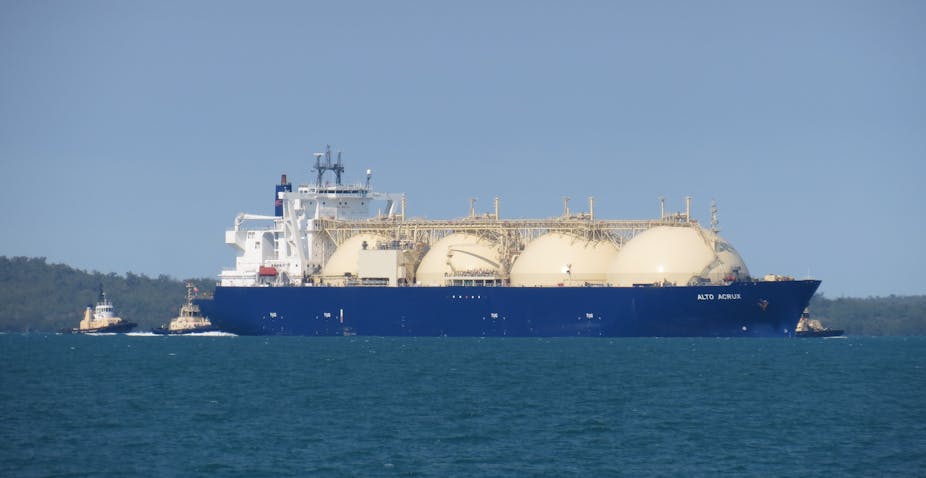Queensland’s liquid natural gas boom, built on the back of vast reserves of coal seam gas, will bring huge gains to Australia. Exports of gas are set to quadruple by 2018, creating investment, jobs and income.
The boom is being driven by an increase in international demand for gas, and its consequent rising price. Other countries – particularly Japan, having closed its nuclear facilities – are looking to gas to meet their energy needs. Japanese wholesale gas prices have increased to more than A$16 a gigajoule.
Spurred on by these high international prices, Australian producers have developed new, previously uneconomical gas reserves, and the capacity to export gas for the first time from Australia’s east coast. Virtually overnight, a closed domestic market has become an international one.
Teething pains
But this change has a significant downside. In the next two or three years, the wholesale cost of gas for domestic use will more than double. Embracing the international market means moving towards the international price, as domestic consumers will have to compete with international users who are prepared to pay significantly more than Australians are used to paying.
As a result, businesses and households in Australia face an unpleasant shock and some hard choices. On top of large increases to electricity prices over the past decade, a typical Melbourne household’s annual gas bill is likely to rise by more than A$300. For small businesses that rely on gas, such as dry cleaners, the annual increase could be as high as A$2,500. Gas consumers are increasingly frustrated and are already demanding a response from government.
The Grattan Institute’s new report, Gas at the crossroads: Australia’s hard choice, looks at how the gas revolution on the east coast will affect households and businesses, and what governments should and shouldn’t do to help gas consumers.
Australia has enough gas in reserve to support both the domestic and export markets. But the gas market on the east coast, while not broken, is not flexible or transparent enough to deal with the transition to an international market. Inevitably, the losers are local consumers. Both the government and the gas industry have been slow to act to help consumers with the gas market transition. Both need to do more.
Keeping prices low – without domestic reserves
The Federal Government should commission a review of the gas market to identify barriers to its competitiveness and then move quickly to address them. A functioning market would give consumers access to the lowest prices.
Both industry and governments need to work with communities to resolve the impasse over coal seam gas in New South Wales and Victoria. One way or the other, a resolution would bring certainty to gas producers, and allow them to make stable investment decisions and get gas moving. The poor flow of information to all consumers has been striking; better information from government and industry will help households and businesses respond appropriately to rising gas prices.
The best way to bring prices back down will be to get more gas flowing. When faced with high prices in the United States, gas producers responded by increasing development. Now Americans pay some of the world’s lowest gas prices.
Yet governments should not put constraints on the market – for example, by introducing a gas reservation policy that allocates a fixed amount of gas to domestic consumers for a fixed (and lower) price.
While such a policy would appear to ensure a domestic gas supply, it will not necessarily reduce prices in the long term or increase supply, and would reduce the incentive for producers to develop more gas. The difficult transition that the country is going through as it adjusts from a domestic to an international gas market would be prolonged. Although businesses and households are hurting, any move towards protectionist policies will be counterproductive and limit the economic benefits of gas development.
After their initial rise, gas prices are likely to come down again if governments hold their nerve. Prices will not, however, fall back to where they are now. Without a price on carbon, this means that gas will be priced out of electricity generation, except to meet short-term peaks in demand, and generation will shift back towards coal.
As coal produces more greenhouse emissions, this is bad news for the environment and for Australia’s target of cutting emissions by 5% by 2020.
The gas boom will make meeting our emissions obligations a whole lot more difficult. That is a completely different challenge that Australia has to face up to.

